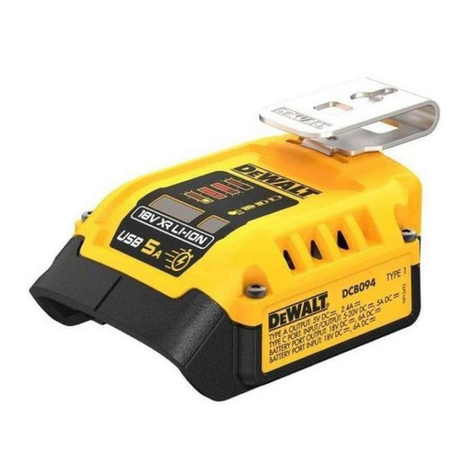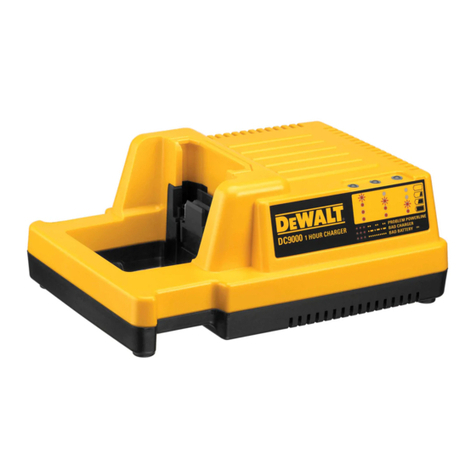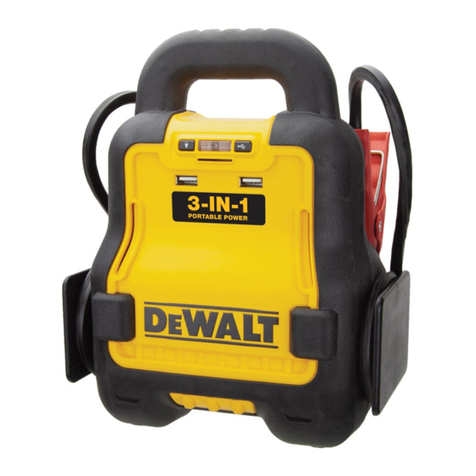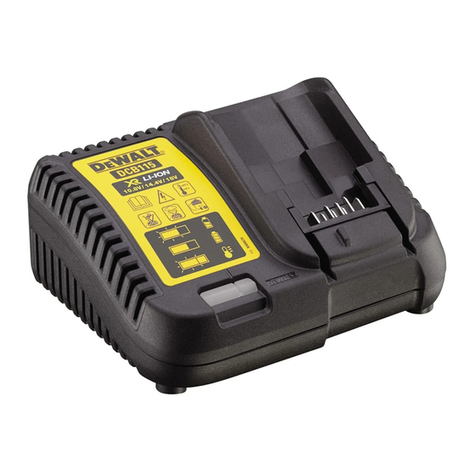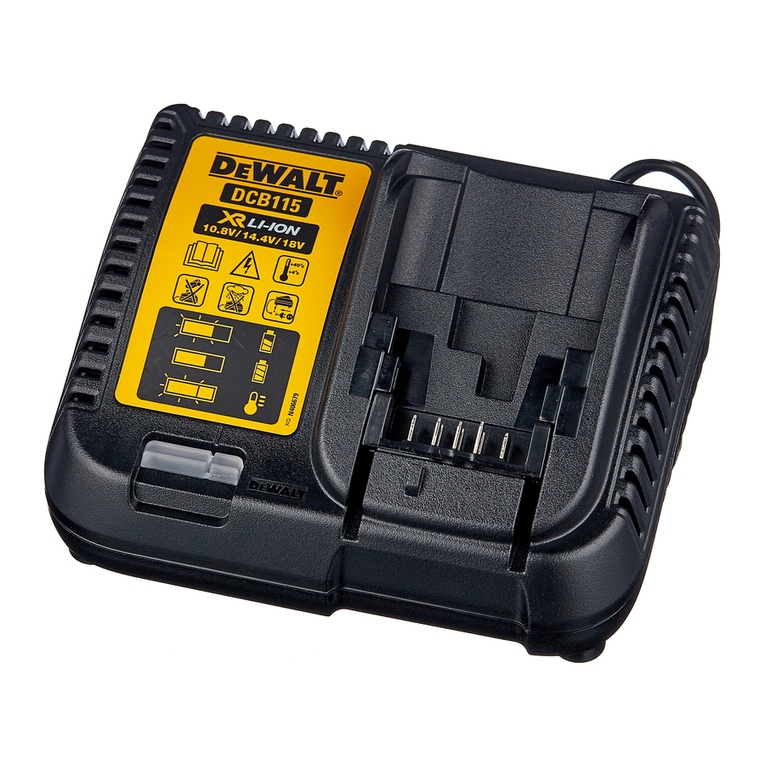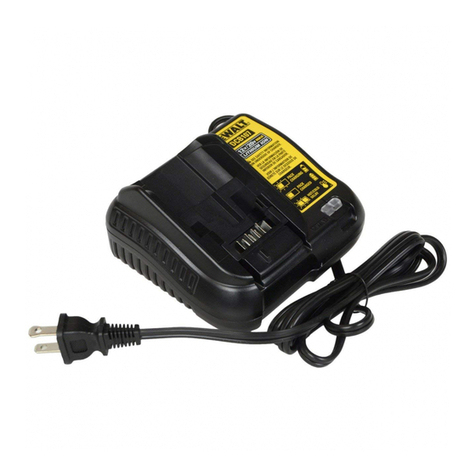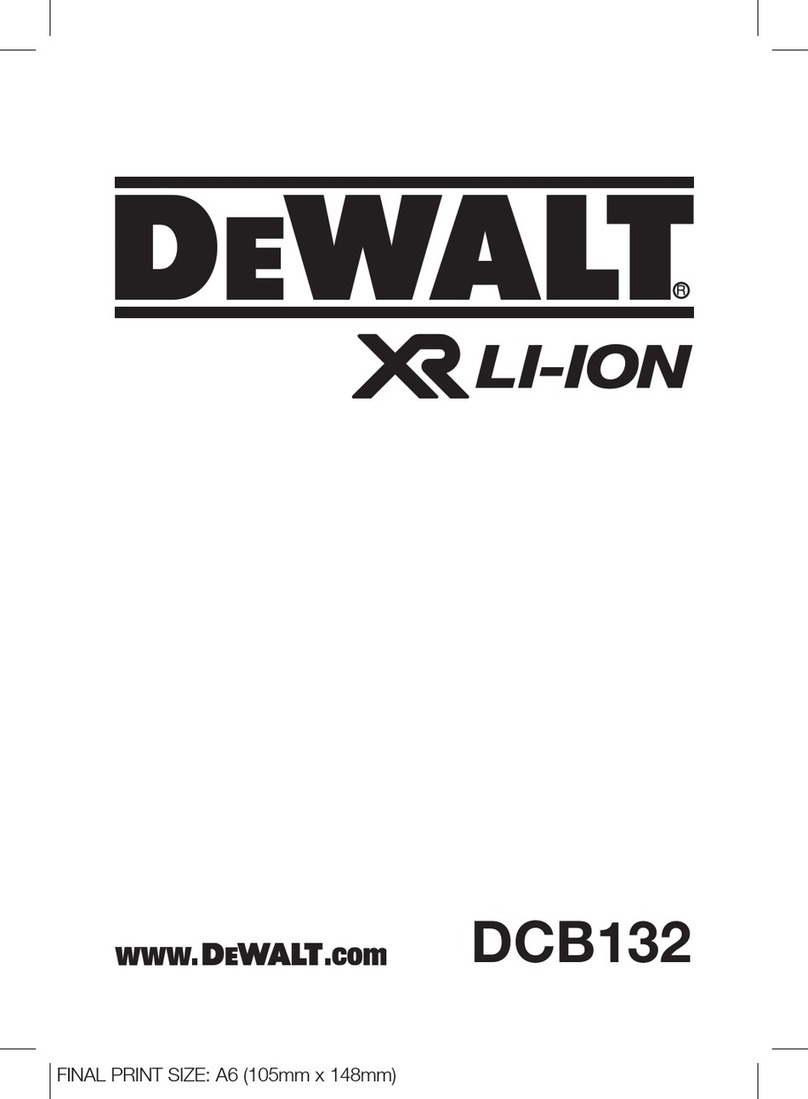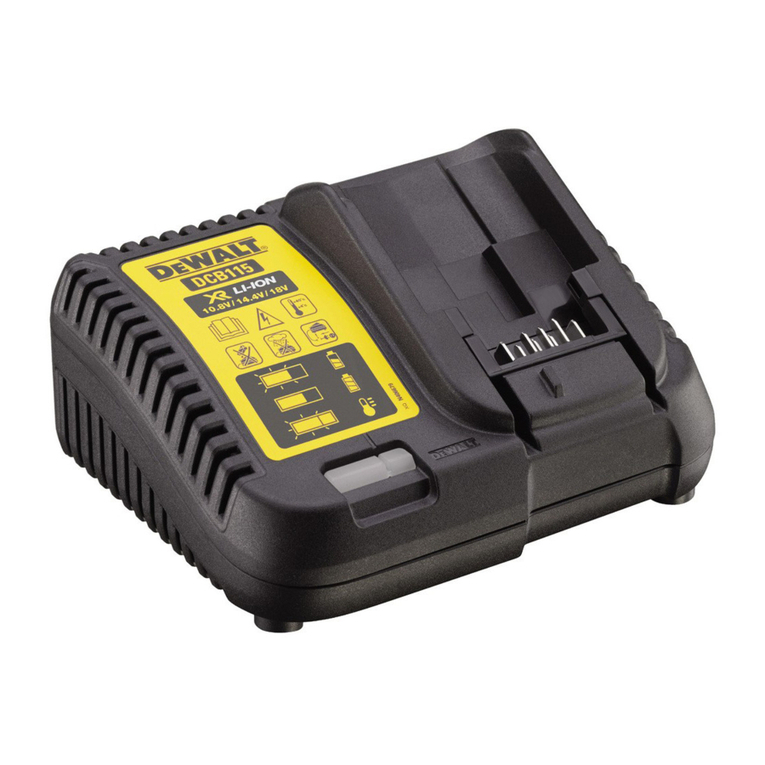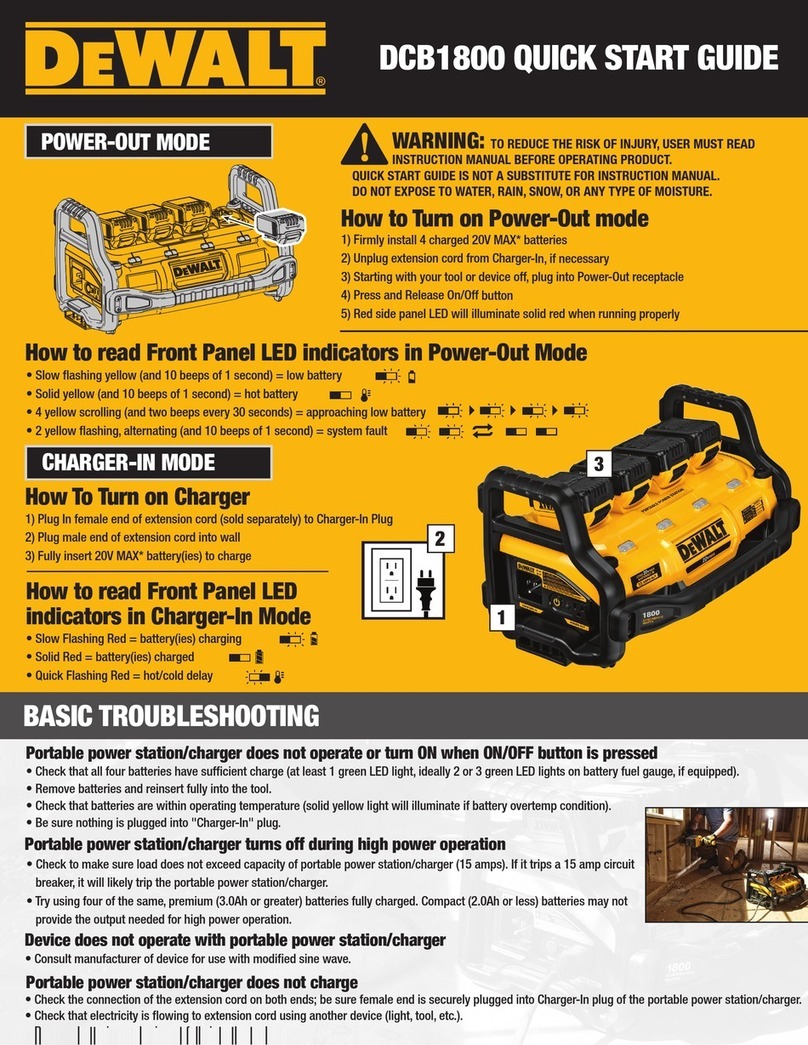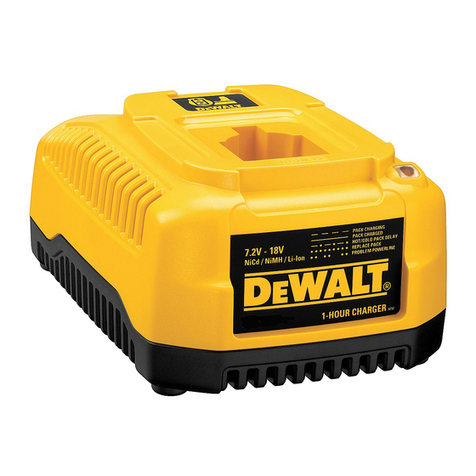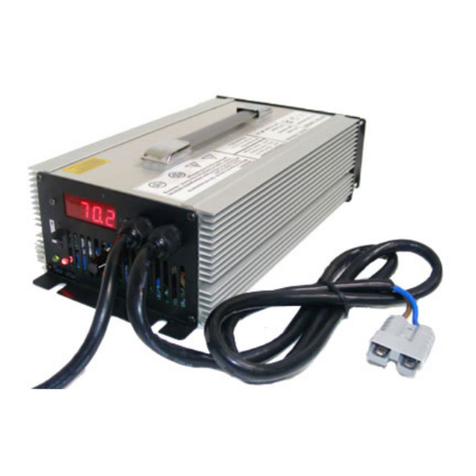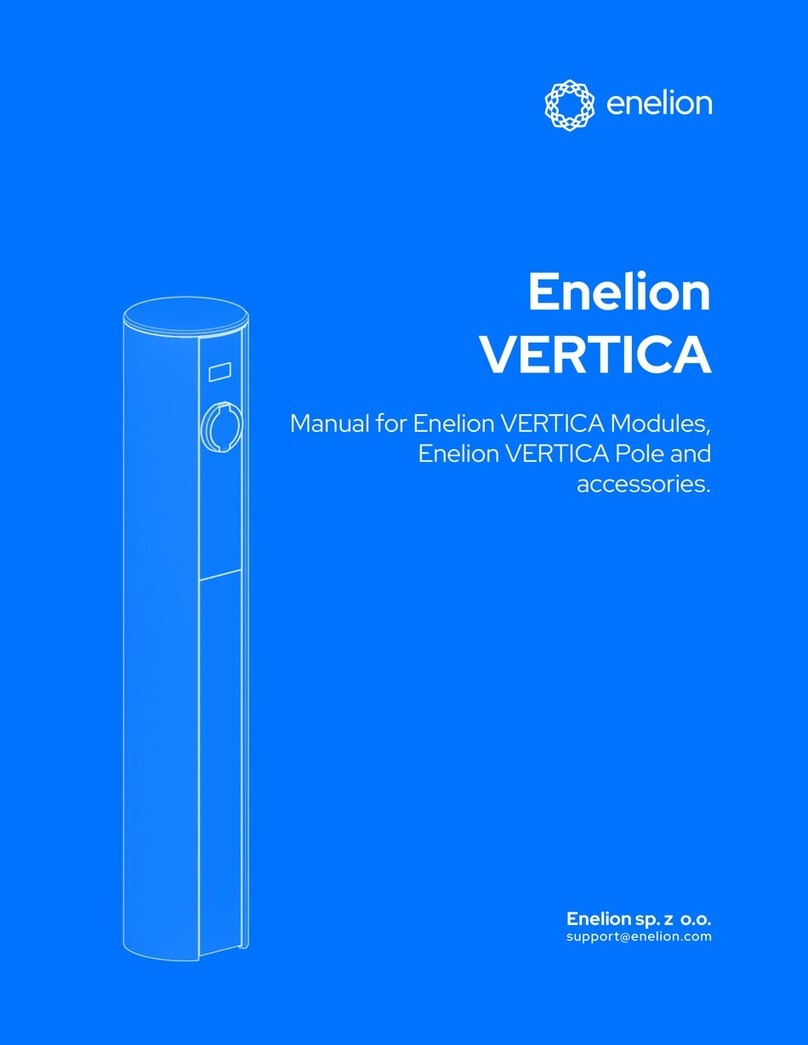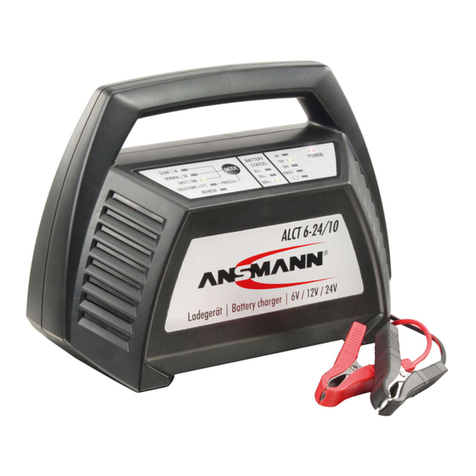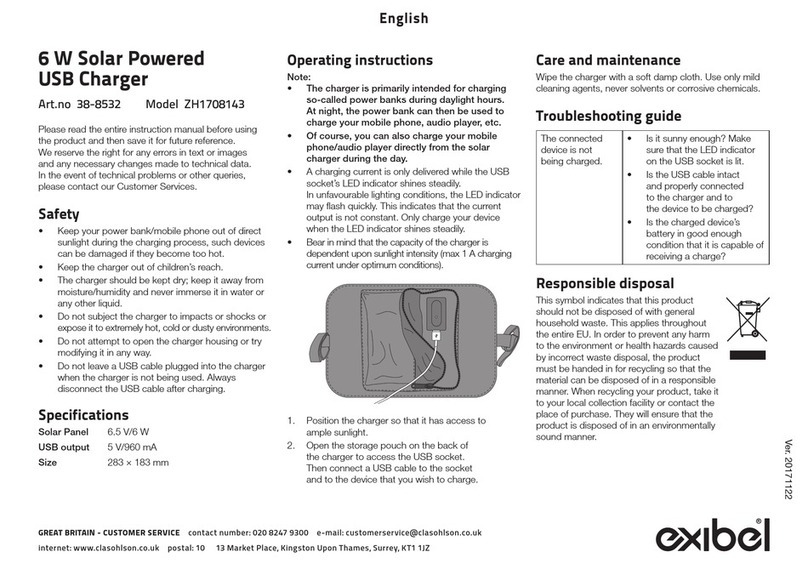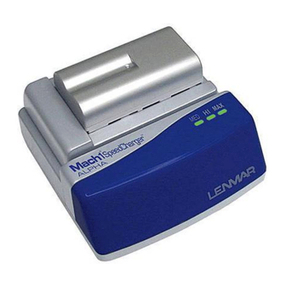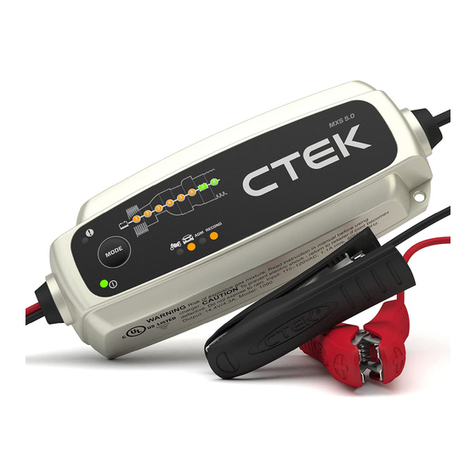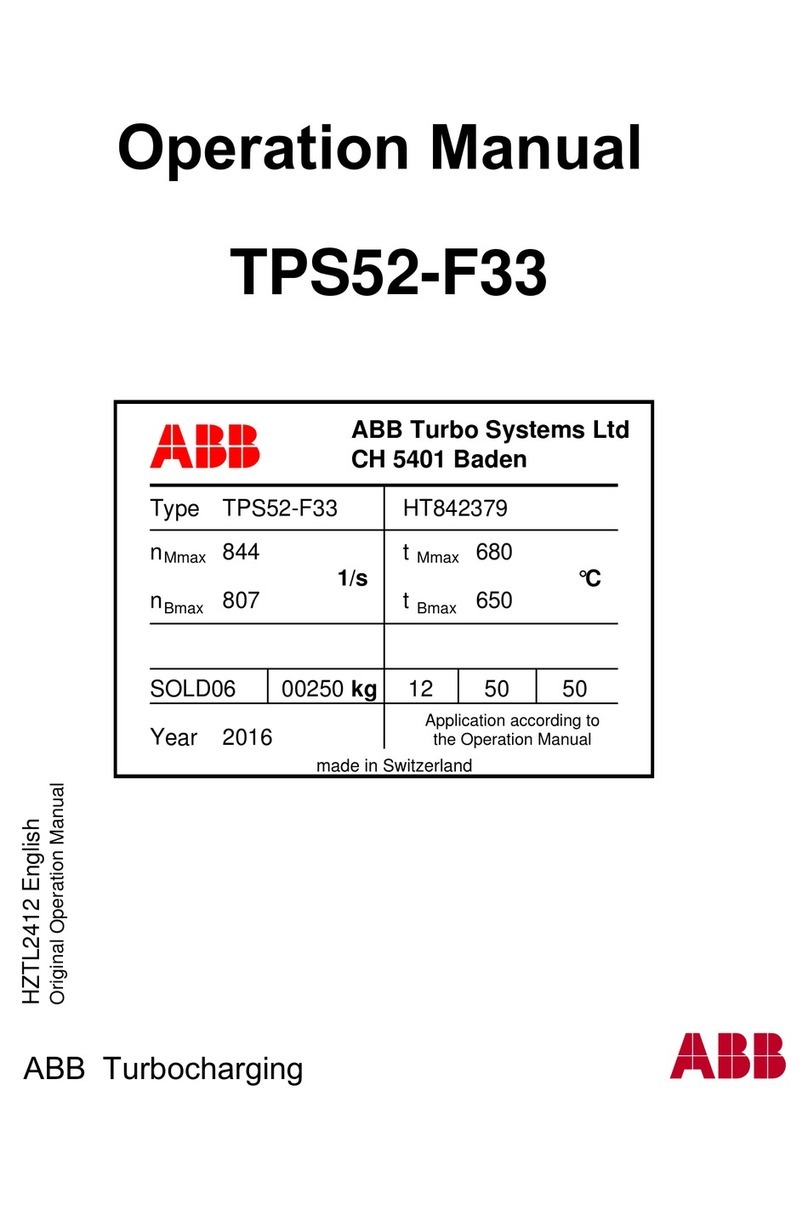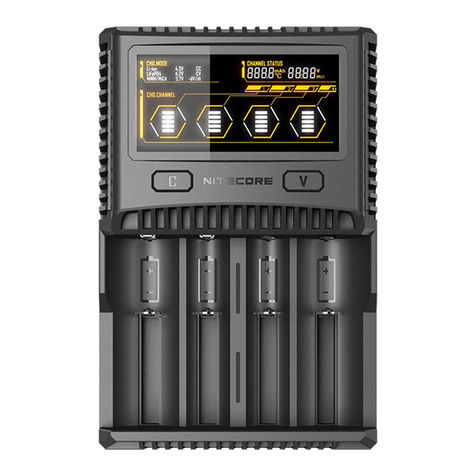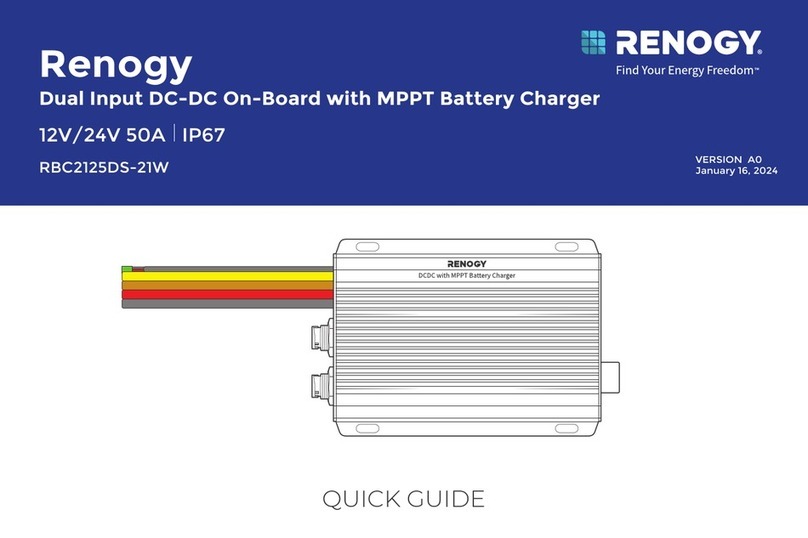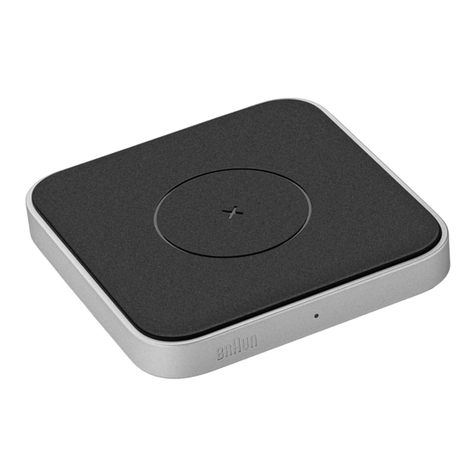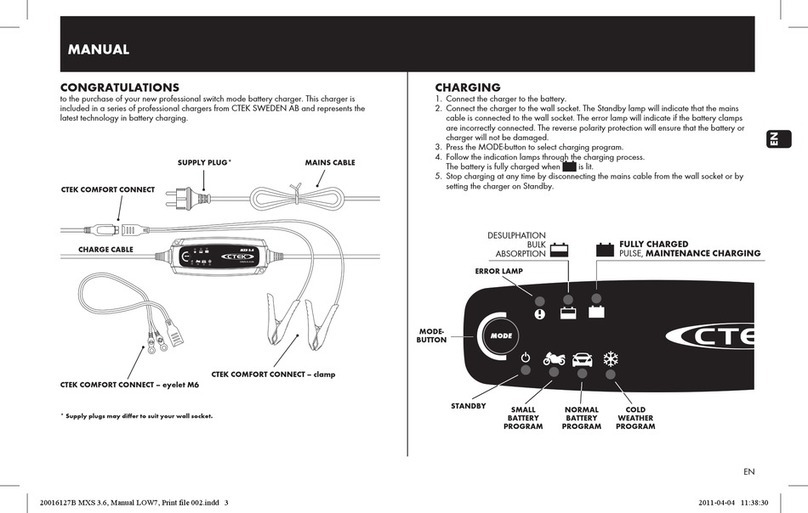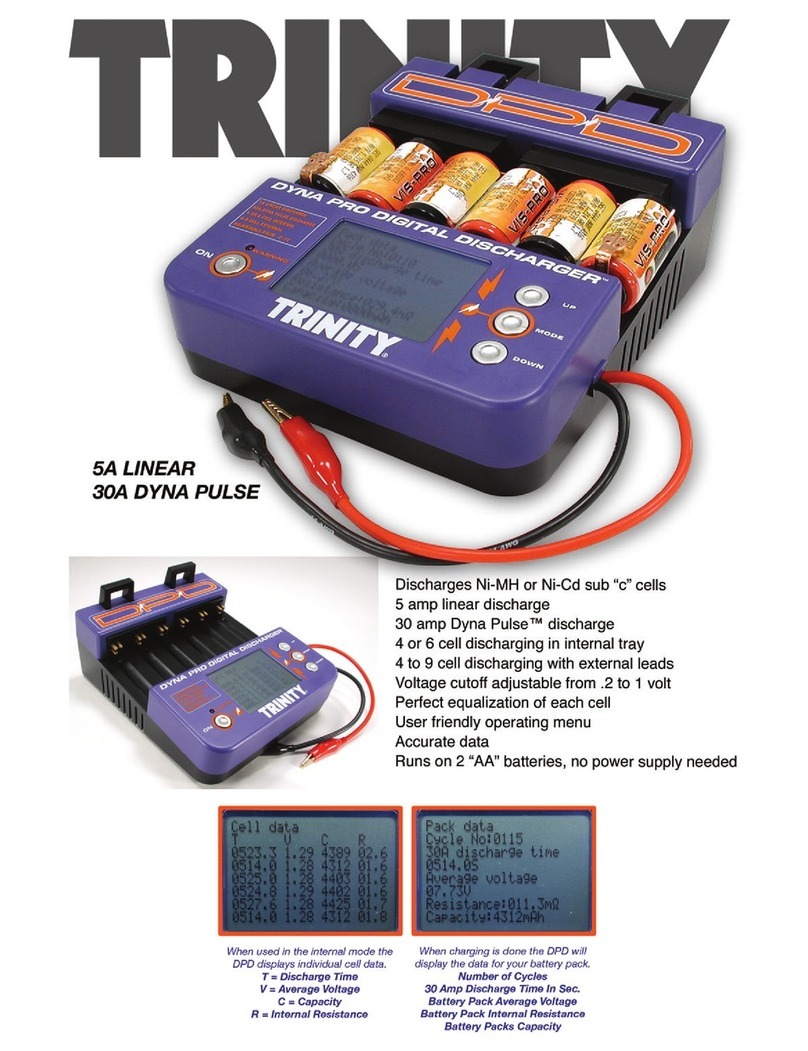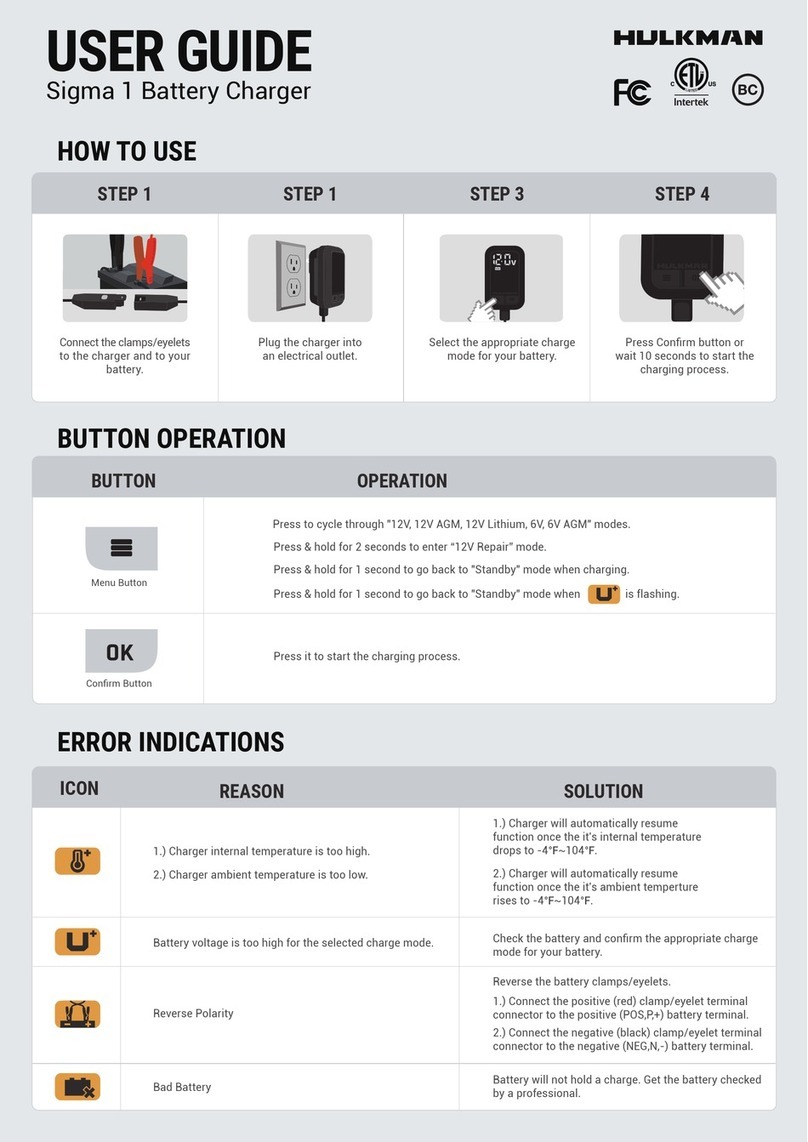
English
7
uneven surface, take proper precautions to secure the wheels to
avoid shifting or movement before use.
• Locate charger as far away from battery as cables permit.
• Never place charger directly above battery being charged; gases
from battery will corrode and damage charger.
• Never allow battery acid to drip on charger when reading gravity or
filling battery.
• Never operate charger in a closed-in area or restrict ventilation in
any way.
• Marine batteries must be removed and charged on shore.
• Do not set a battery on top of charger.
CONNECTION PRECAUTIONS
• Connect and disconnect output clamps only after removing AC cord
from electric outlet.
• Never allow clamps to touch each other.
• Attach clamps to battery and chassis as indicated in “Follow these
steps when the battery is installed in a vehicle” steps 5 and 6, or in
“Follow these steps when the battery is installed in a vehicle” steps
2 to 5.
FOLLOW THESE STEPS WHEN THE BATTERY IS INSTALLED
IN A VEHICLE
WARNING:A spark near the battery may cause an
explosion. To reduce risk of a spark near the battery:
1. Position AC and clamp cords to reduce risk of damage by hood,
door, or moving engine part.
2. Stay clear of fan blades, belts, pulleys, and other parts that can
cause injury to persons.
3. Check polarity of battery posts. POSITIVE (POS, P, +) battery post
usually has larger diameter than NEGATIVE (NEG, N, –) post.
4. Determine which post of battery is grounded (connected) to
the chassis. If negative post is grounded to chassis (as in most
vehicles), see 5. If positive post is grounded to the chassis, see 6.
5. For negative-grounded vehicle, connect POSITIVE (RED) clamp
from battery charger to POSITIVE (POS, P, +) ungrounded post of
battery. Connect NEGATIVE (BLACK) clamp to vehicle chassis or
engine block away from battery. Do not connect clip to carburetor,
fuel lines, or sheet-metal body parts. Connect to heavy gauge metal
part of the frame or engine block.
6. For positive-grounded vehicle, connect NEGATIVE (BLACK) clamp
from battery charger to NEGATIVE (NEG, N, –) ungrounded post
of battery. Connect POSITIVE (RED) clamp to vehicle chassis or
engine block away from battery. Do not connect clip to carburetor,
fuel lines or sheet-metal body parts. Connect to a heavy gauge
metal part of the frame or engine block.
7. When disconnecting charger, disconnect AC cord, remove clamp
from vehicle chassis, and then remove clamp from battery terminal.
8. Do not charge the battery while the engine is operating.
9. See operating instructions for length of charge information.
FOLLOW THESE STEPS WHEN THE BATTERY HAS BEEN
REMOVED FROM A VEHICLE
WARNING: A spark near the battery may cause an
explosion. To reduce risk of a spark near the battery:
1. Check polarity of battery posts. The Positive post (marked POS,P,
+) usually has a larger diameter than the Negative battery post
(marked NEG, N, –).
2. Attach a 24-inch (minimum length) AWG #6 insulated battery cable
to the Negative battery post (marked NEG, N, –).
3. Connect the Positive (RED) battery clamp to the Positive battery
post (marked POS, P, + or red).
4. Stand as far back from the battery as possible, and do not face
battery when making final connection.

